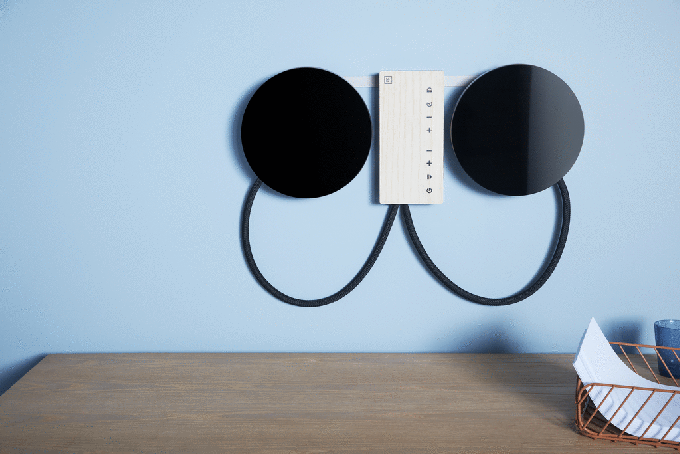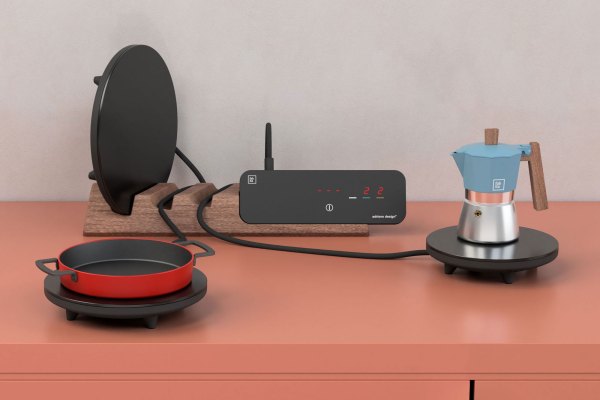Flip through a random slideshow on Architectural Digest, and chances are you’ll see a kitchen with a massive range as the centerpiece. They usually have at least six gas burners, ideally two or more ovens, and enough cooking grates to look like a family of arachnids died atop a 19th-century bank safe.
Over the last decade or so, “statement” ranges have become a fixture of high-end kitchens. They’re archaic-looking enough to evoke a sort of nostalgia, and their scale is overwhelmingly large enough to play into people’s fantasies that they have time and energy to cook elaborate, multicourse meals, the kind where you’d actually need to use more than four burners at once.
They’re sold as professional-style ranges, but the irony is that many high-end restaurants have already relegated open flames to a corner of their kitchens.
Instead of a long line of blue-flamed gas burners, they’re turning to portable induction hobs that chefs can move around the workstations at will.
The trend arguably started in the mid-2000s. Grant Achatz was an early adopter, and it influenced the kitchen design for Alinea, his then-new restaurant in Chicago.
“By utilizing portable induction burners we are allowed the flexibility to give as much power as needed to a specific station in the kitchen,” Achatz wrote in a forum post in 2004. The lack of open flames also helped keep temperatures down, making a more comfortable working environment for the staff.
“But the main reason for choosing this flexible source of heat is the fact that each chef typically employed at least four different cooking applications on a given night,” he said. “This huge flux in technique and the realization that the menu would change entirely in eight weeks time meant that we had to design a kitchen that could evolve on a nightly basis.”
Now, I’m not going to claim that what I make in my kitchen comes anywhere close to the level of cuisine produced at Alinea, but I will admit that the idea of a more flexible kitchen has captured my imagination from time to time.
That’s right: I want to get rid of my range.
The one I have is nothing fancy, just a 30-inch wide induction range with a convection oven underneath. I love the induction cooktop. It’s like everyone says: easy to control, efficient, and doesn’t turn the kitchen into a sauna.
But a few Thanksgivings ago, when its touch controls were acting up (something easily fixed with an eraser), I started redesigning the kitchen in my head. I’d install a separate oven, which is easy to find, and extend the countertop over where the cooktop used to be. In its place, I’d have four induction hobs that I could stow when they weren’t in use.
The design was inspired by the Fabita Ordine, a pair of induction hobs that can be used on a countertop and hung on a wall. They look far better than most portable induction hobs, but no one sells them in the U.S. Plus, they’re not that powerful, maxing out at 1,800 watts per hob. That’s half what my range’s largest element is rated for and 700 watts less than the two midsize ones.

The Ordine’s induction elements can be easily stored when not in use, freeing up countertop space. Image Credits: Fabita
In a perfect world, I’d have an Ordine-like appliance with one large hob capable of 3,600 watts or more, a midsize one that could do 2,500 to 3,000 watts, and a smaller one rated for 1,800 watts. If I need more than that, I’d supplement them with ugly portable models. Sadly, that product doesn’t exist. Fabita is getting close with their Sorpresa model, which offers three elements at higher power, though not quite as high as my current range (and still not available in the U.S.).
Most appliance manufacturers have been happy to drop an induction cooktop on their existing product lines and call it a day. That lackadaisical approach gives startups an opportunity, though. Not everyone wants a kitchen that looks like their grandparents’.
There have been a few notable experiments. The Ordine is one, of course. Conjured up by Davide and Gabriele Adriano of Adriano Design, the concept not only maximizes prep space, but it also allows the chef to control the layout of the cooking elements. Anyone who’s accidentally purchased a cooktop with the big element in the back knows how valuable that can be.
Fabita is arguably pushing the induction argument the furthest, incorporating the magnetic coils into tables and carts. The latter even has a lithium-ion battery in its base that provides up to an hour of wireless cook time.
Another take, which remains in the concept stage, is a foldout induction cooktop. It could fit over a countertop, like the Ordine, or it could be mounted freestanding to a wall. Both approaches would be boons for anyone in need of more counter space, and the latter would be especially beneficial for people who rely on wheelchairs to get around.
Still another design, which is also in the concept stage, integrates the cooktop and countertop into one nearly seamless kitchen fixture. Designed by Gamadecor, a Spanish company, the design places the induction coils below the countertop surface. The only thing interrupting it are the controls.
The countertop would still need some markings to show where pots and pans should be placed, but the work surface is otherwise uninterrupted. What’s more, the designers also envisioned a series of small appliances that can be powered wirelessly by the coils below.
It’s the sort of ground-up rethink of a kitchen appliance that is impossible with gas or with resistance electric heating.
So where are the other clever ideas piggybacking off the flexibility that induction allows? So far the only two startups I’ve seen (Induction and Channing Street Copper Company) graft a battery to a standard-looking range to enable them to work on 120-volt power. It’s an approach that will allow a lot of kitchens to electrify without pricey panel and wiring upgrades — not a bad thing! — but it’s not the sort of out-of-the-box thinking that I’ve been yearning for.
Will everyone want a range-free kitchen? Of course not. But I guarantee I’m not the first person in this country to lust after one. Founders: I don’t have any seed funding to offer, but the idea is free, and you’ll have at least one customer singing your praises.
